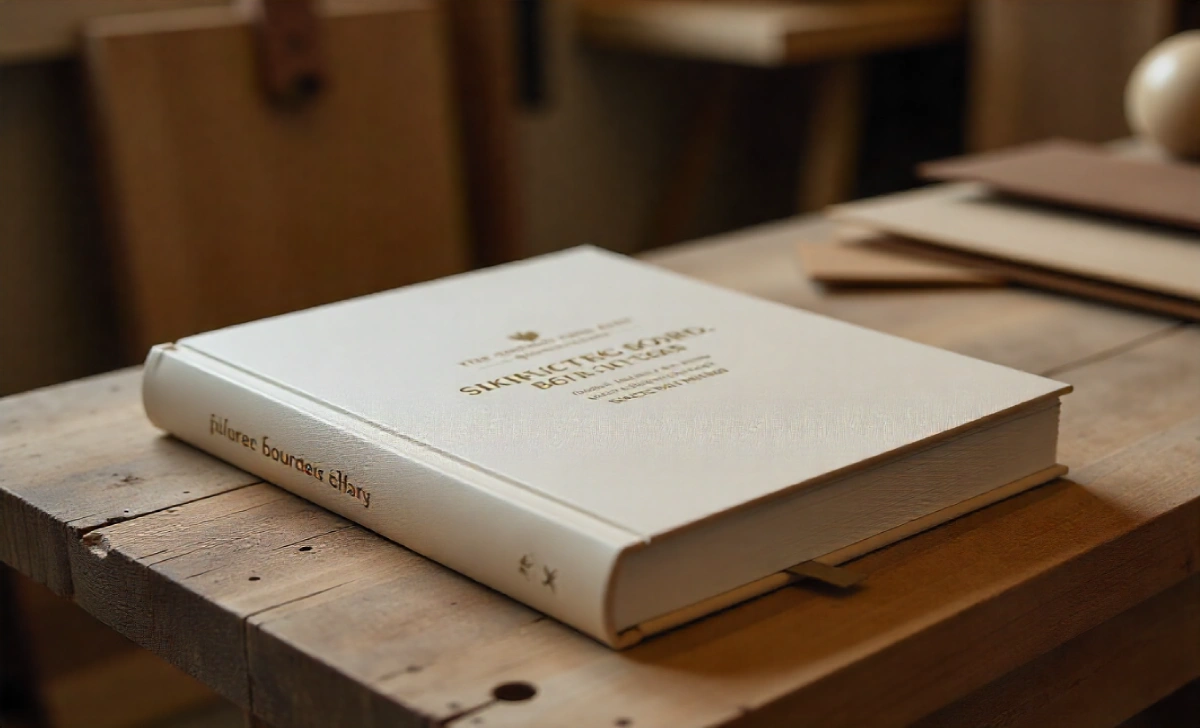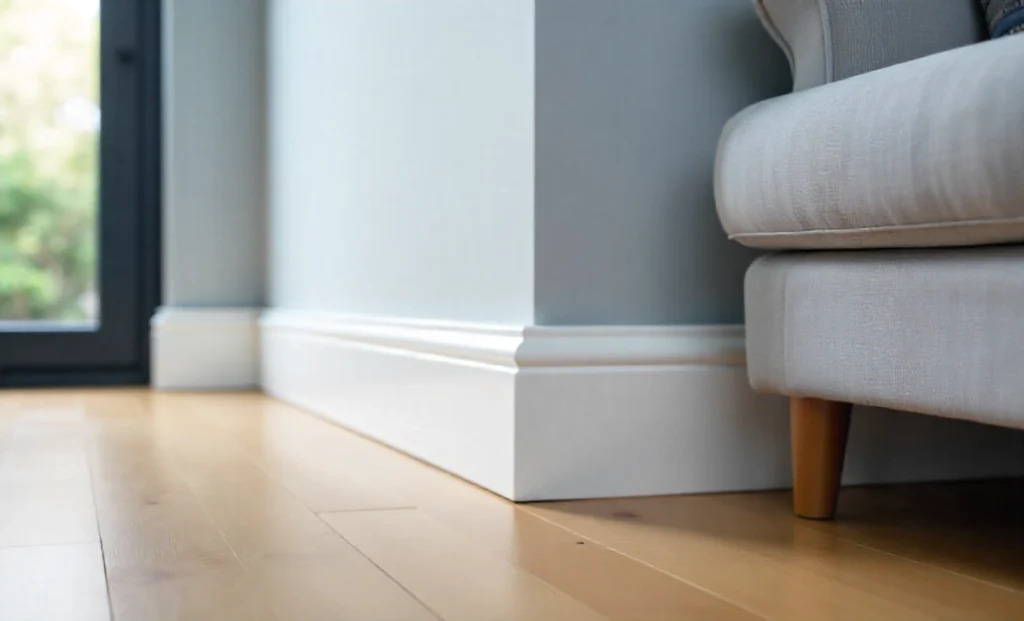Your walls deserve better than chipped, outdated trim that screams “renovation needed.” Skirting board covers offer a smart shortcut to refreshed interiors without the mess of full replacement. You’re about to discover why they’re becoming every homeowner’s secret weapon for instant style upgrades.
What Are Skirting Board Covers and Why They Matter
Think of skirting board covers as your wall’s makeover artist. They slip right over existing trim, hiding damage instantly. No demolition required—just clean lines and modern appeal where old meets new.
These clever additions protect your walls from daily wear and tear. Kids, pets, and furniture all take their toll on baseboards over time. Covers act like armor while delivering the fresh look you’ve been craving for years.
The best part? You can install most covers in a weekend. Skip the contractor calls and dust clouds that come with traditional renovations. Your wallet stays happy, and your home gets the upgrade it deserves without breaking budgets.
Types of Skirting Board Covers Available
PVC Covers: The Budget Champion
PVC covers dominate the market for good reason—they’re affordable and practically indestructible. Water won’t phase them, making them perfect for kitchens and bathrooms where moisture loves to cause problems. They come in various finishes that mimic wood, stone, or sleek modern materials with surprising accuracy.
Installation couldn’t be simpler, with most PVC options featuring clip-on systems. You’ll spend more time choosing your favorite style than actually putting them up. Maintenance involves nothing more than occasional wiping with standard household cleaners.
MDF Covers: The Style Specialist
MDF skirting board covers bring that authentic wood feel without the premium price tag. They paint beautifully, allowing custom colors that match your exact vision for room aesthetics. These covers work especially well in living areas where visual warmth matters most.
The smooth surface takes paint like a dream, creating professional results. You can even add decorative molding details for that high-end custom look. Just remember, they’re not ideal for high-moisture areas like bathrooms or basements.
Wood Veneer: The Premium Pick
Real wood veneer covers offer authentic grain patterns that foolproof nobody. They’re perfect when you want genuine material beauty without full baseboard replacement costs. Staining options let you match existing woodwork throughout your home.
These covers require slightly more care than synthetic alternatives. Regular dusting and occasional wood conditioner keep them looking fresh for decades. The investment pays off in both durability and timeless appeal.
How to Measure for Perfect Skirting Board Covers
Start by measuring each wall section separately—rooms are rarely perfectly square. Use a quality tape measure and write down exact lengths for every piece you’ll need. Don’t forget to account for internal and external corners that require special pieces.
Height matters just as much as length when selecting covers. Measure your existing skirting boards at their tallest point, including any decorative elements. Most covers come in standard heights, but some manufacturers offer custom sizing options.
Check for any obstacles like radiator pipes or electrical outlets along the wall. These require careful planning and sometimes custom cuts to ensure clean installation. Mark their positions on your measurement sketch for reference during shopping.
Add 10% extra material to your final calculation for mistakes and future repairs. Better to have slightly too much than discover you’re short during installation. Most suppliers accept returns on unopened packages if you overestimate.
Step-by-Step Installation Guide
Preparation Makes Perfect
Clean your existing skirting boards thoroughly before starting any installation work. Remove dust, grease, and loose paint that could interfere with adhesive bonding. A simple sugar soap solution works wonders for this cleaning step.
Check that your walls are reasonably straight and level throughout the room. Minor imperfections won’t matter, but major dips or bulges might need addressing first. Use a spirit level to identify any problem areas.
Cutting and Fitting
Measure twice, cut once—this old saying saves materials and frustration during installation. Use a fine-tooth saw for clean cuts that won’t require extensive sanding afterward. Mark your cutting lines clearly with a pencil and ruler.
Start with the longest, most visible wall to get comfortable with the process. Work your way around the room in logical order, fitting pieces carefully. Most covers use simple overlap joints at corners for professional-looking results.
Securing Your Covers
Follow manufacturer instructions exactly for adhesive application—more isn’t always better when bonding materials. Apply even pressure along the entire length while the adhesive sets properly. Some covers use mechanical fixings that require pilot holes for screws.
Check alignment frequently during installation to catch problems early when they’re easy to fix. Use a spirit level to ensure your covers stay perfectly horizontal throughout the room.
Design Ideas That Actually Work
Modern Minimalist Magic
White or light gray covers create clean lines that make rooms feel larger instantly. Pair them with matching door frames for cohesive design flow throughout your home. This approach works especially well in smaller spaces that need visual breathing room.
Consider covers with subtle shadow gaps that add depth without overwhelming the space. These details catch light beautifully and prevent that flat, builder-grade appearance many homeowners want to avoid.
Traditional Warmth
Wood-effect covers bring cozy charm to family areas where comfort matters most. Choose warm tones that complement your furniture and flooring for a harmonious room balance. Darker covers can ground light walls and create sophisticated contrast.
Layer different wood tones carefully—your covers don’t need to match the flooring exactly. Subtle variations add interest while maintaining that pulled-together look professional designers love.
Bold Statement Pieces
Dark covers against light walls create a dramatic contrast that draws attention to architectural details. This approach works particularly well in dining rooms or entryways where impact matters. Just balance the boldness with softer elements elsewhere in the room.
Metallic finishes offer modern glamour for contemporary homes seeking something special. These covers reflect light beautifully and pair wonderfully with chrome or brushed steel fixtures.
Maintenance and Long-Term Care

Regular cleaning keeps your skirting board covers looking fresh for years without special products. A damp cloth removes most daily dirt and dust that accumulates naturally. Vacuum cleaner brush attachments work perfectly for textured or grooved cover styles.
Address scuffs and marks quickly before they become permanent stains or damage. Most covers respond well to gentle cleaning products and soft scrubbing pads. Test any new cleaner in an inconspicuous area first to avoid surprises.
Check joints and fixings annually to catch any loosening before it becomes problematic. Humidity changes and house settling can affect installations over time, but quick adjustments prevent major issues.
Cost Analysis: Covers vs Full Replacement
Skirting board covers typically cost 60-80% less than a complete baseboard replacement, including labor. You’re looking at £3-15 per linear meter depending on material choice and quality. Professional installation adds £5-10 per meter if you prefer expert fitting.
Full replacement involves removal costs, wall repairs, new materials, and professional installation fees. The total easily reaches £25-50 per linear meter before you factor in disruption time. Covers eliminate most of these expenses while delivering similar visual results.
Factor in the time savings when calculating real project costs—covers install in hours, not days. You won’t need to move furniture multiple times or live with renovation chaos. Your family routine continues normally while improvements happen around you.
Common Mistakes to Avoid
Don’t rush the measuring process—accuracy here prevents frustration and waste later in your project. Double-check every measurement and add that extra 10% buffer for unexpected needs. Precision pays off in professional-looking results that last.
Avoid mixing different manufacturers’ products even if they look similar at first glance. Slight variations in dimensions or finish can create visible inconsistencies throughout your installation. Stick with one supplier for the entire project.
Never ignore wall preparation steps in your eagerness to see quick results. Clean surfaces bond better and create longer-lasting installations that won’t disappoint. A few extra minutes of prep work prevent future headaches.
Conclusion
Skirting board covers transform tired interiors without the expense and disruption of full renovations. They protect your walls while delivering the fresh, modern look your home deserves. With proper planning and installation, covers provide years of beautiful, low-maintenance performance.
Choose materials that match your lifestyle and design preferences for the best results. Whether you prefer budget-friendly PVC or premium wood veneer, quality covers deliver impressive visual impact. Your walls will thank you for the upgrade, and your wallet will stay happy too.


